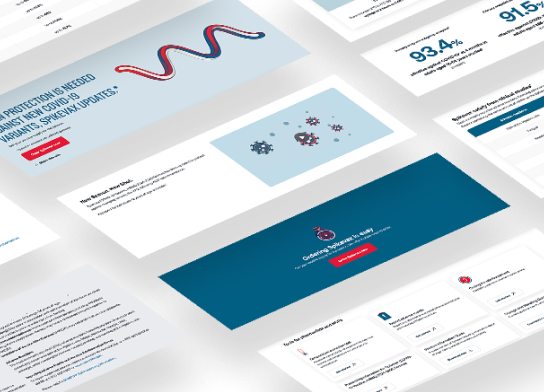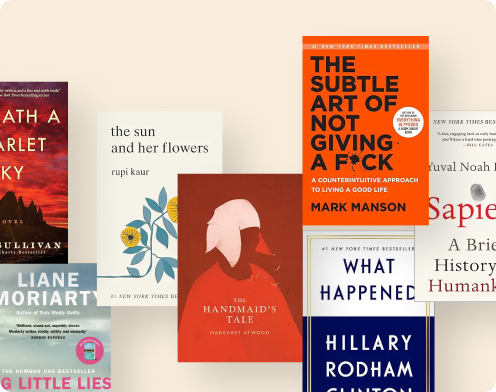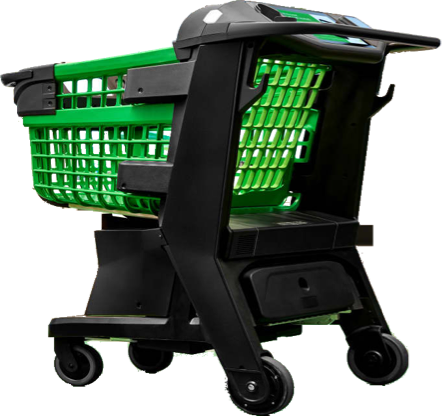AMAZON ORIGINAL STORIES
Design that doubled conversions and launched a new imprint
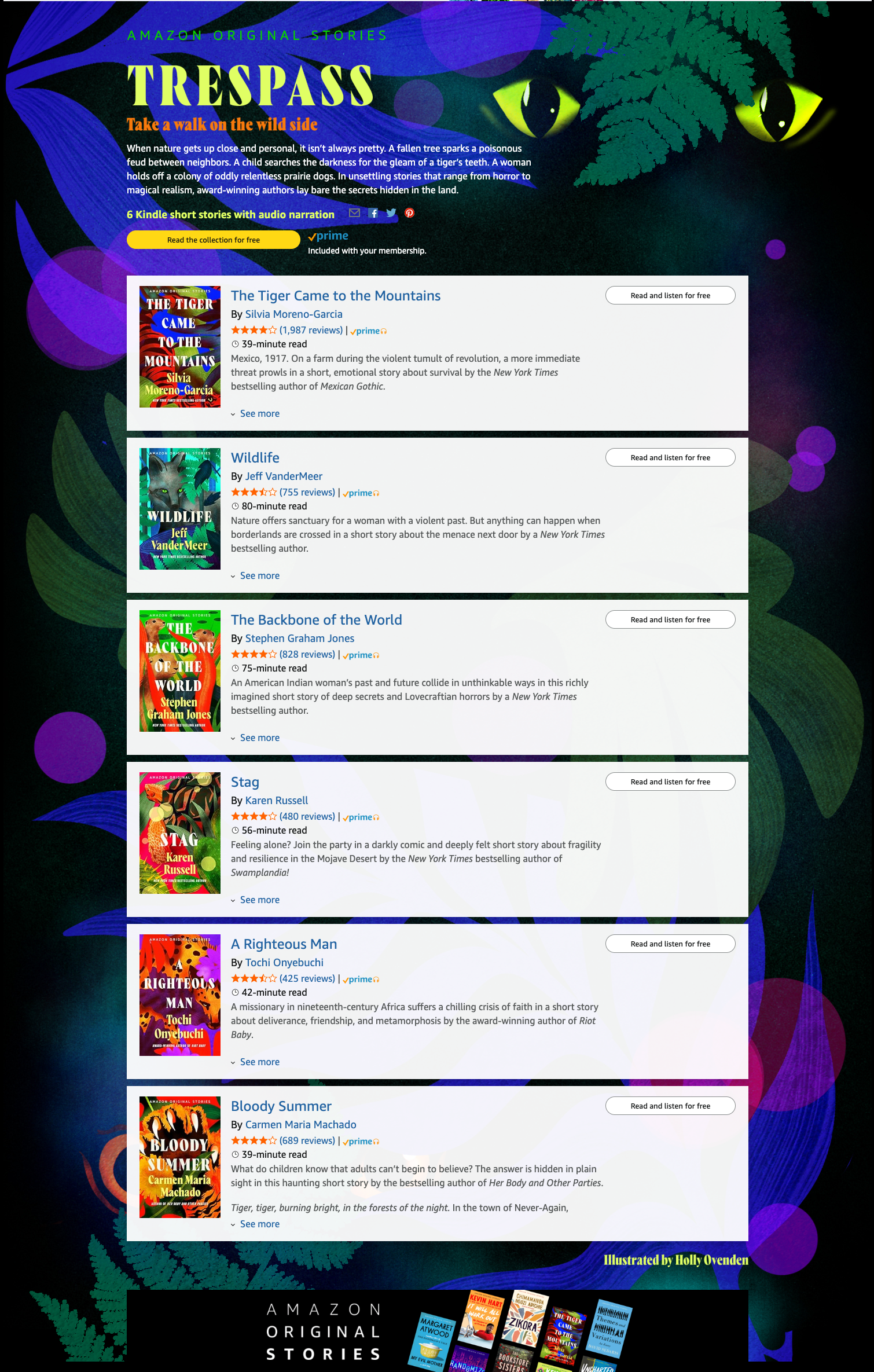
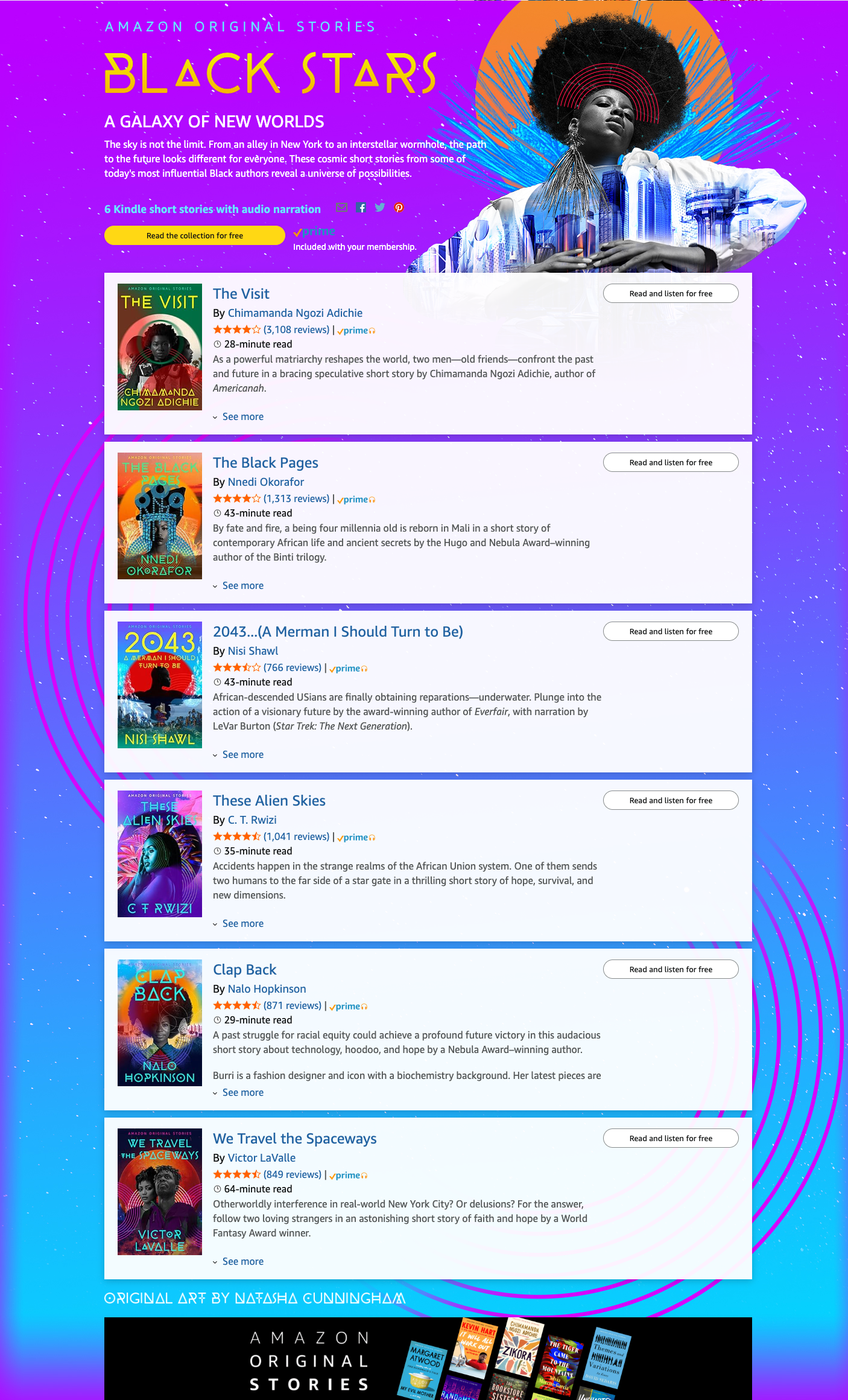
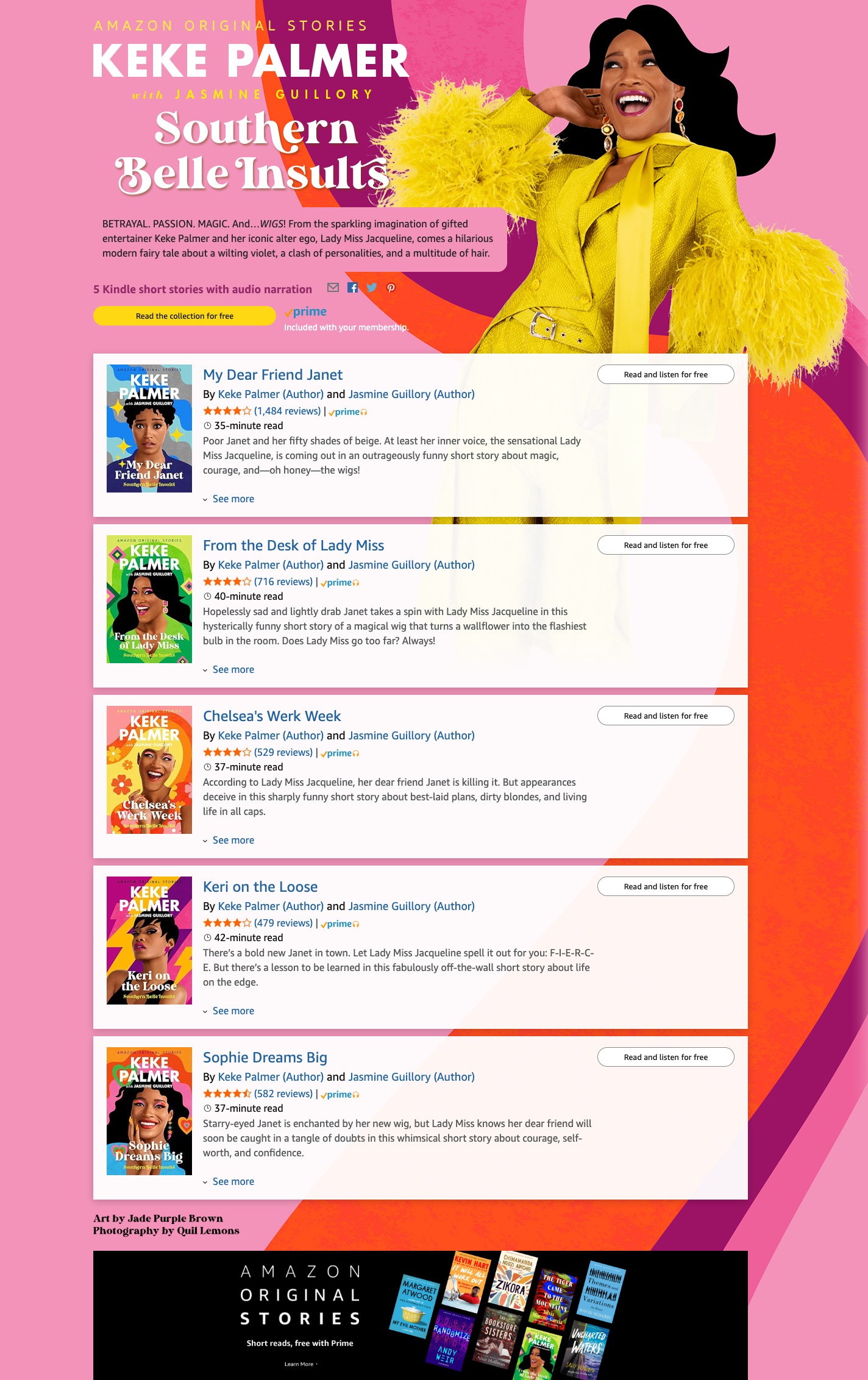
Overview
Amazon Publishing asked for a quick storefront to sell short-story collections. I challenged the scope and proposed a broader strategy, which helped spark the creation of a new publishing imprint.
Role
Sr. UX Designer-
responsibilities
End-to-end UX, design system, product strategy
collaborators
Editorial Director, Product Manager, Artists, Art Directors, Engineering team
impact
45% of all customers downloaded >1 title; 2X the conversion rate; Work led to a new publishing imprint
The project
Customer problems
As a reader, I need help finding my next read, one that’s high quality and that I know I’ll like. As a relatively unknown author, I need ways to be discovered by new readers.
Business problems
As a publishing business, I want people to get in the habit of reading with Kindle.
Success metrics
Get customers to purchase – and read – more than one book in the collection.
Approach
Challenging the scope
The Amazon Publishing editorial team asked me pull together several short stories with similar themes into one shopping page on Amazon so that customers could easily find their next read. They asked me to put together a quick design, reusing an existing Amazon template.
I put together what they asked for...and pitched another idea: What if it were more than just an eCommerce experience? What if the collection was the actual product? The editorial team was interested and wanted to understand what ideas I had.
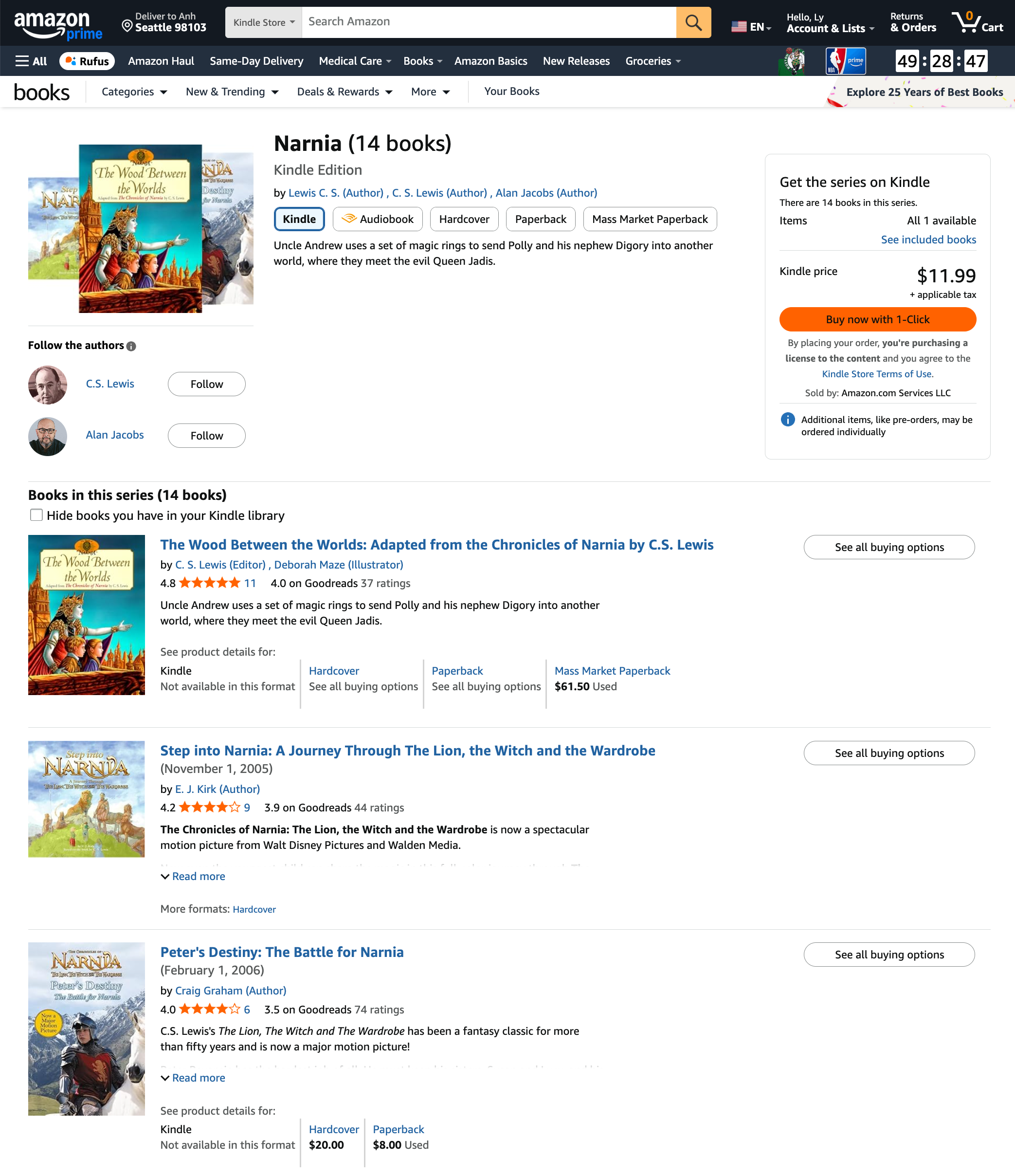
Finding inspiration
I looked at other products – music albums, clothes-subscription services, bento boxes – that communicated a thematically-related, curated collection. Individually, each object within the collection could stand on its own. Together, it would add up to the best experience.
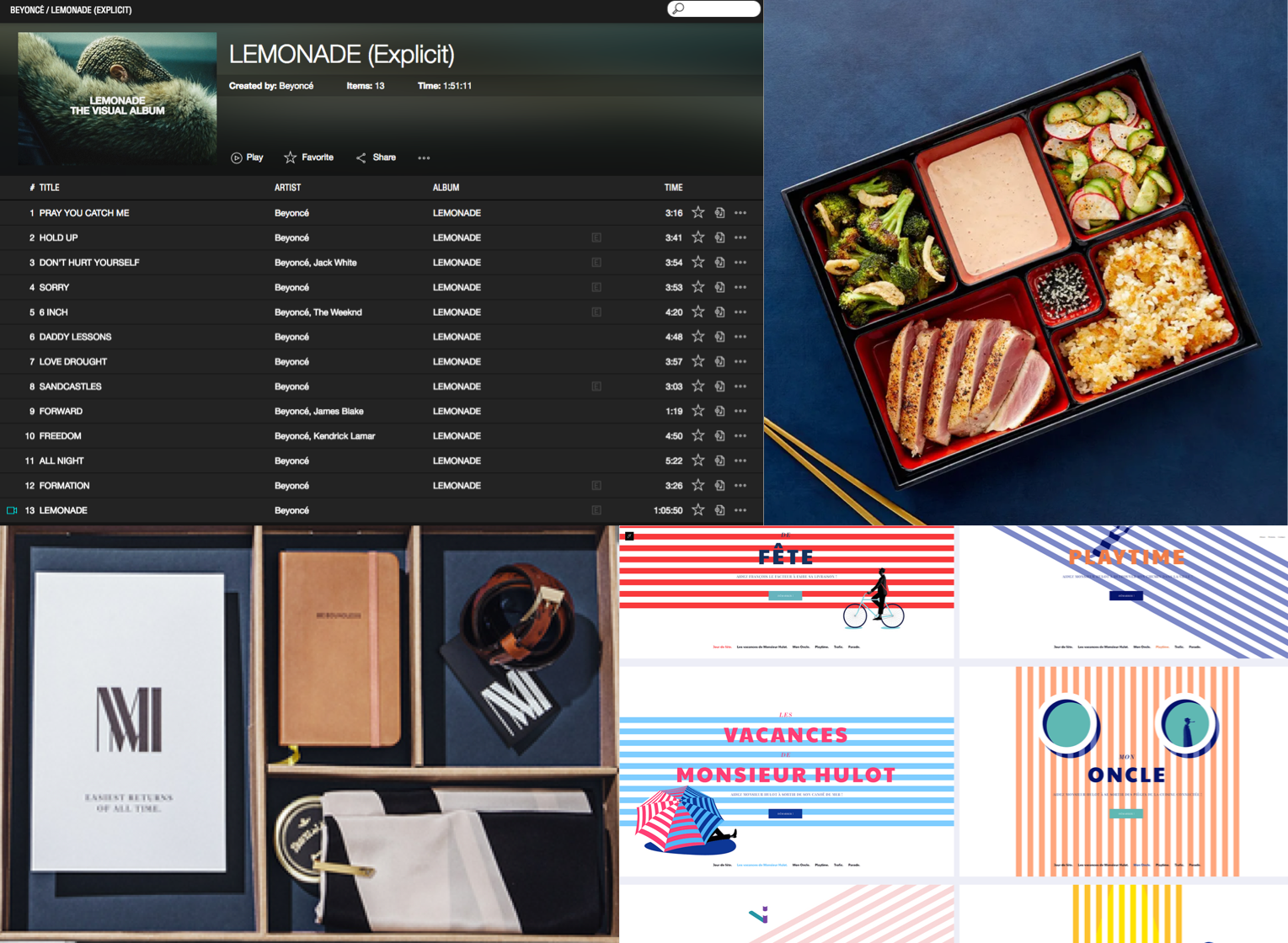
Explore move the conversation forward
I then did a lot of explorations. The goal of these explorations were to get as many ideas out as possible to help move the conversation forward. I was an integral part of the product strategy, along with the editorial and product team.
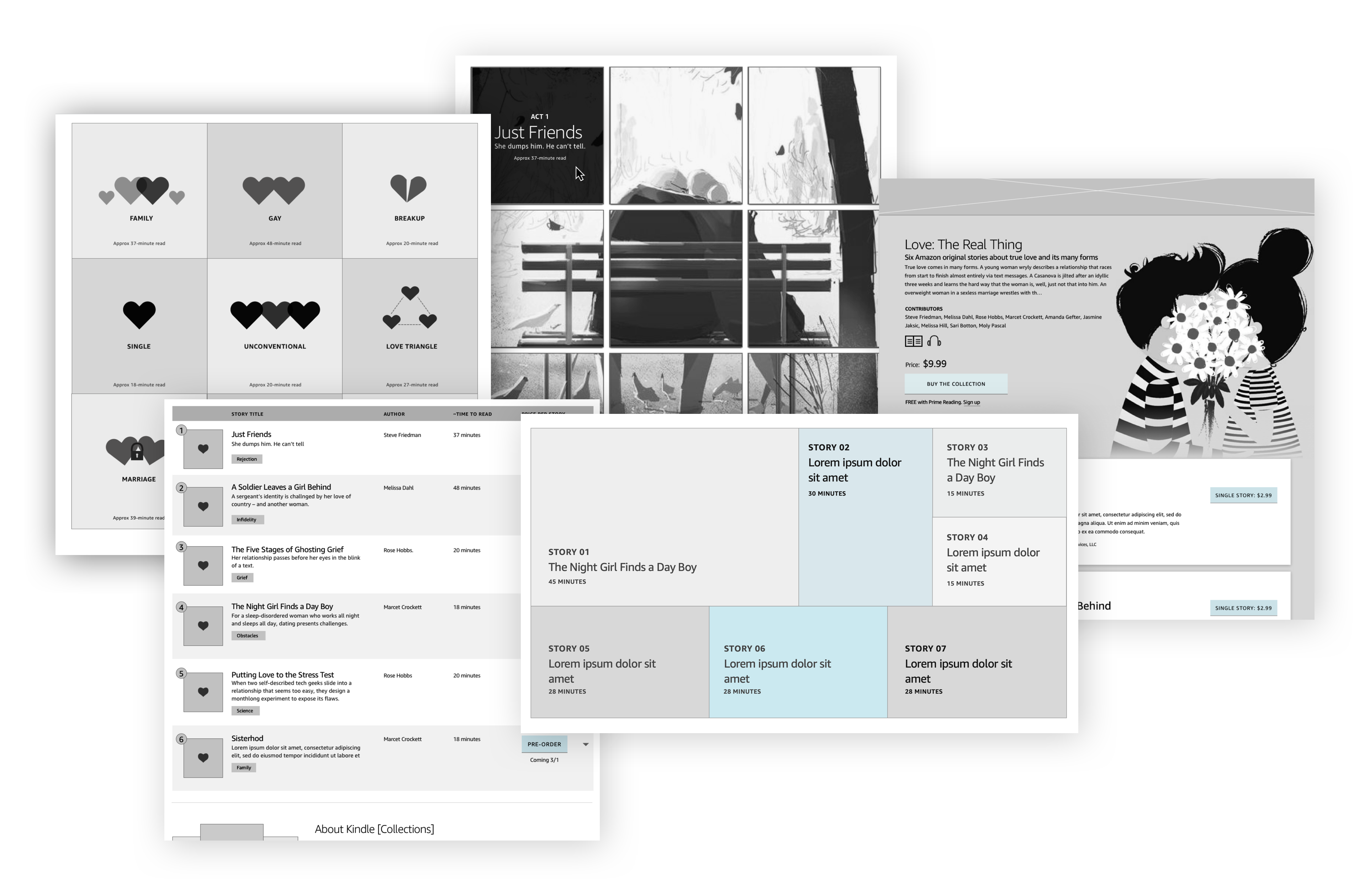
Aligning on a direction
We needed the story collection to "live" on Amazon.com and abide by the site's guidelines. At the same time, we needed our product to feel editorially curated, not algorithmically generated. I experimented with custom, full-bleed artwork to give it an editorial feel. I also experimented with the shape of each story cover. Instead of a the iconic "tall rectangle," could we lean into the podcast metaphor, which are typically square?
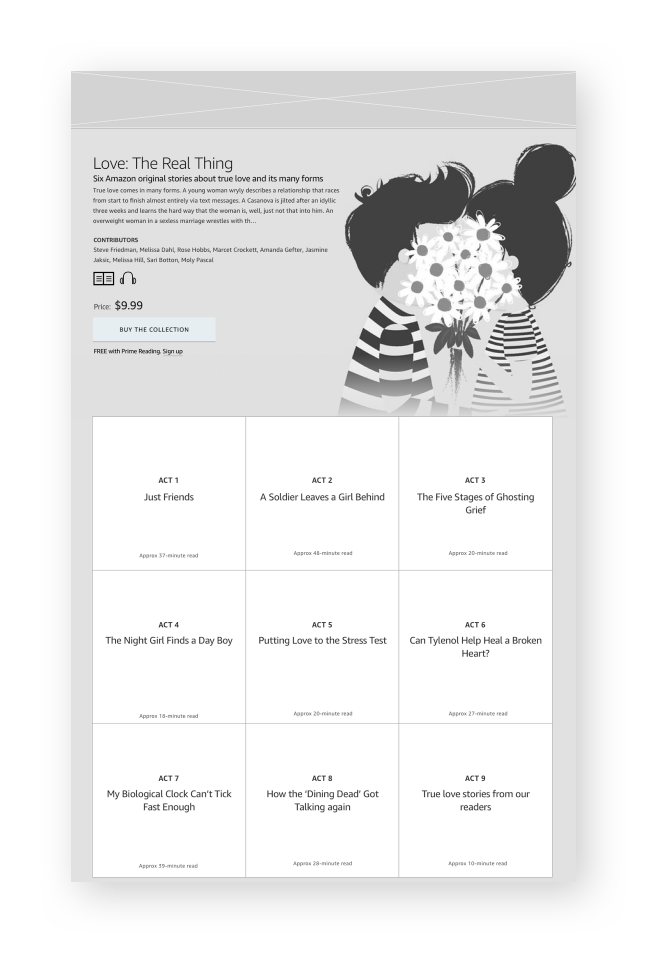
Guerilla testing
I was uncertain whether customers would actually understand what the product was. We didn’t have the resources to bring in research participants from outside the company. To get answers to my learning goals, I interviewed internal Amazon employees, not affiliated with the publishing arm.
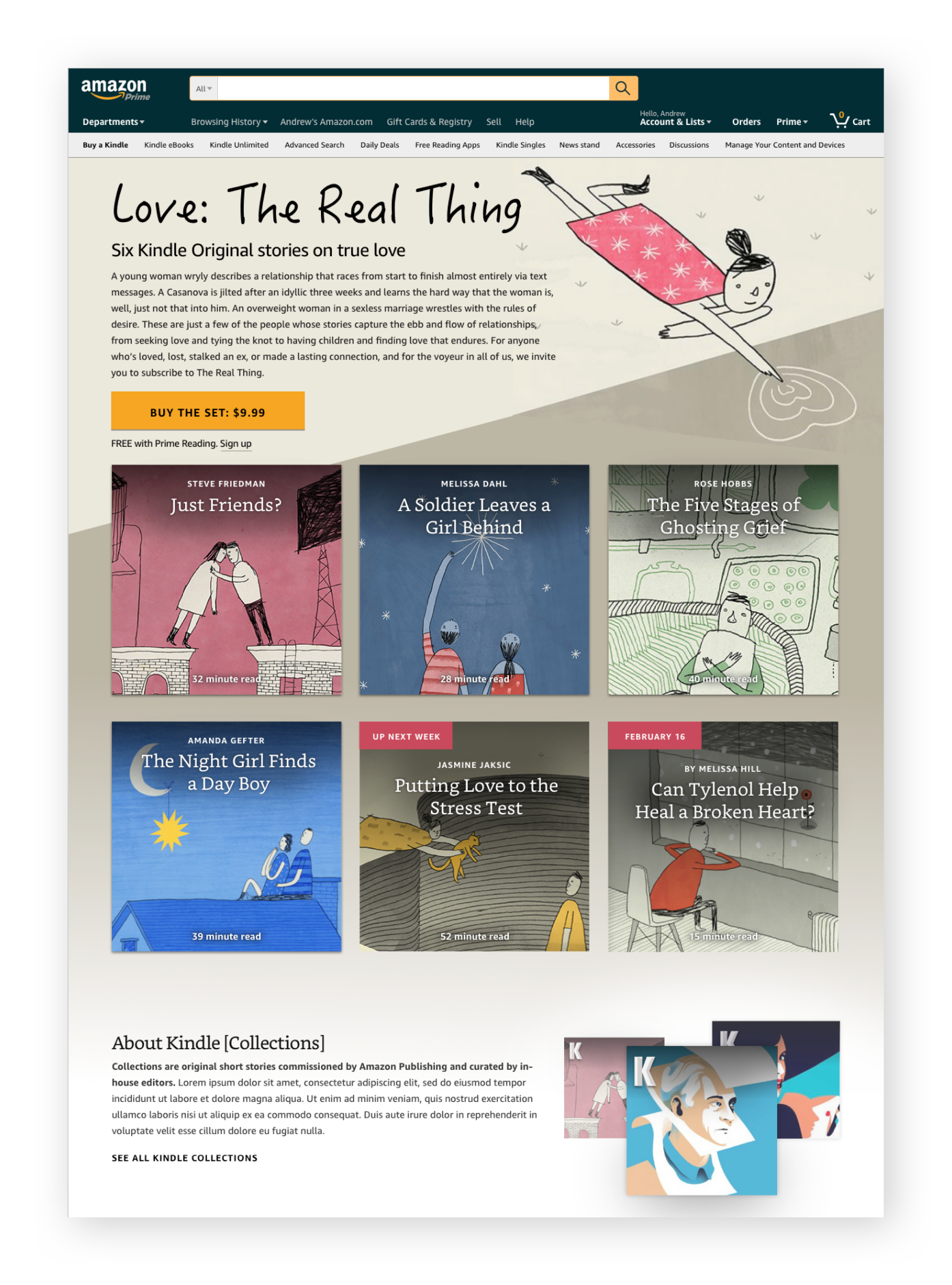
Key insights
Don't invent the wheel
I explored having the covers to the stories be square to emphasize the listening aspect to our product. It ended up confusing our participants. I returned to the more traditional-shape book, peppering in the action verb “read” to make it more clear.
Leverage existing branding
A quarter of the participants I tested said they would download only one story first to get an understanding if it was high-quality. This led me to piggyback on the "Amazon Original" branding, which already carried with it the qualities we desired (premium, exclusive). The impact of this led to my organization (Amazon Publishing) adding "Amazon Original Stories" as a new imprint.
Creating the flywheel
Making it effortless to get to the next story was key to the experience. This required me to work across organizations to get the experience we were aiming for.
The solution
The business impact
The project exceeded our goals. The collections page led people to download multiple titles and take advantage of the audio-narration capabilities of Kindle. We also received lots of kudos from the authors we worked with.
45%
Downloaded > 1 title
9.3%
Conversion rate
(typically 1-4%)
68%
Read and listened
(up 57 percent)
102,941
Read and listened (up 57 percent)
(first 4 months)
New imprint!
As a result of this work, Amazon Publishing added the “Amazon Original Stories” imprint to their publishing business.
“I love what Amazon Original Stories is doing for readers and writers alike.”
Wednesday Martin
Author of Boyfriends of Dorothy

AMAZON ORIGINAL STORIES
Design that doubled conversions and launched a new imprint



Overview
Amazon Publishing asked for a quick storefront to sell short-story collections. I challenged the scope and proposed a broader strategy, which helped spark the creation of a new publishing imprint.
Role
Sr. UX Designer-
responsibilities
End-to-end UX, design system, product strategy
collaborators
Editorial Director, Product Manager, Artists, Art Directors, Engineering team
impact
45% of all customers downloaded >1 title; 2X the conversion rate; Work led to a new publishing imprint
The project
Customer problems
As a reader, I need help finding my next read, one that’s high quality and that I know I’ll like. As a relatively unknown author, I need ways to be discovered by new readers.
Business problems
As a publishing business, I want people to get in the habit of reading with Kindle.
Success metrics
Get customers to purchase – and read – more than one book in the collection.
Approach
Challenging the scope
The Amazon Publishing editorial team asked me pull together several short stories with similar themes into one shopping page on Amazon so that customers could easily find their next read. They asked me to put together a quick design, reusing an existing Amazon template.
I put together what they asked for...and pitched another idea: What if it were more than just an eCommerce experience? What if the collection was the actual product? The editorial team was interested and wanted to understand what ideas I had.

Finding inspiration
I looked at other products – music albums, clothes-subscription services, bento boxes – that communicated a thematically-related, curated collection. Individually, each object within the collection could stand on its own. Together, it would add up to the best experience.

Explore move the conversation forward
I then did a lot of explorations. The goal of these explorations were to get as many ideas out as possible to help move the conversation forward. I was an integral part of the product strategy, along with the editorial and product team.

Aligning on a direction
We needed the story collection to "live" on Amazon.com and abide by the site's guidelines. At the same time, we needed our product to feel editorially curated, not algorithmically generated. I experimented with custom, full-bleed artwork to give it an editorial feel. I also experimented with the shape of each story cover. Instead of a the iconic "tall rectangle," could we lean into the podcast metaphor, which are typically square?

Guerilla testing
I was uncertain whether customers would actually understand what the product was. We didn’t have the resources to bring in research participants from outside the company. To get answers to my learning goals, I interviewed internal Amazon employees, not affiliated with the publishing arm.

Key insights
Don't invent the wheel
I explored having the covers to the stories be square to emphasize the listening aspect to our product. It ended up confusing our participants. I returned to the more traditional-shape book, peppering in the action verb “read” to make it more clear.
Leverage existing branding
A quarter of the participants I tested said they would download only one story first to get an understanding if it was high-quality. This led me to piggyback on the "Amazon Original" branding, which already carried with it the qualities we desired (premium, exclusive). The impact of this led to my organization (Amazon Publishing) adding "Amazon Original Stories" as a new imprint.
Creating the flywheel
Making it effortless to get to the next story was key to the experience. This required me to work across organizations to get the experience we were aiming for.
The solution
The business impact
The project exceeded our goals. The collections page led people to download multiple titles and take advantage of the audio-narration capabilities of Kindle. We also received lots of kudos from the authors we worked with.
45%
Downloaded > 1 title
9.3%
Conversion rate
(typically 1-4%)
68%
Read and listened
(up 57 percent)
102,941
Read and listened (up 57 percent)
(first 4 months)
New imprint!
As a result of this work, Amazon Publishing added the “Amazon Original Stories” imprint to their publishing business.

“I love what Amazon Original Stories is doing for readers and writers alike.”
Wednesday Martin
Author of Boyfriends of Dorothy

AMAZON ORIGINAL STORIES
Design that doubled conversions and launched a new imprint



Overview
Amazon Publishing asked for a quick storefront to sell short-story collections. I challenged the scope and proposed a broader strategy, which helped spark the creation of a new publishing imprint.
Role
Sr. UX Designer-
responsibilities
End-to-end UX, design system, product strategy
collaborators
Editorial Director, Product Manager, Artists, Art Directors, Engineering team
impact
45% of all customers downloaded >1 title; 2X the conversion rate; Work led to a new publishing imprint
The project
Customer problems
As a reader, I need help finding my next read, one that’s high quality and that I know I’ll like. As a relatively unknown author, I need ways to be discovered by new readers.
Business problems
As a publishing business, I want people to get in the habit of reading with Kindle.
Success metrics
Get customers to purchase – and read – more than one book in the collection.
Approach
Challenging the scope
The Amazon Publishing editorial team asked me pull together several short stories with similar themes into one shopping page on Amazon, leveraging an existing template. Their strategy was to heavily market the first book in the series (which was usually written by a well-known author) so that they could bring attention to the other books in the series from lesser-known authors.
I created the mock they wanted. I also pitched another idea: What if we leaned into the collection as opposed to individual stories?


Finding inspiration
I looked at other products – music albums, clothes-subscription services, bento boxes – that communicated a thematically-related, curated collection. Individually, each object within the collection could stand on its own. Together, it would add up to the best experience.
Explore move the conversation forward
I then did a lot of explorations. The goal of these explorations were to get as many ideas out as possible to help move the conversation forward. I was an integral part of the product strategy, along with the editorial and product team.


Aligning on a direction
We needed the story collection to "live" on Amazon.com and abide by the site's guidelines. At the same time, we needed our product to feel editorially curated, not algorithmically generated. I experimented with custom, full-bleed artwork to give it an editorial feel. I also experimented with the shape of each story cover.
Guerilla testing
I was uncertain whether customers would actually understand what the product was. We didn’t have the resources to bring in research participants from outside the company. To get answers to my learning goals, I interviewed internal Amazon employees, not affiliated with the publishing arm.

Key insights
Don't invent the wheel
I explored having the covers to the stories be square to emphasize the listening aspect to our product. It ended up confusing our participants. I returned to the more traditional-shape book, peppering in the action verb “read” to make it more clear.
Leverage existing branding
A quarter of the participants I tested said they would download only one story first to get an understanding if it was high-quality. This led me to piggyback on the "Amazon Original" branding, which already carried with it the qualities we desired (premium, exclusive).
Creating the flywheel
Making it effortless to get to the next story was key to the experience. This required me to work across organizations to get the experience we were aiming for.
The solution
The business impact
The project exceeded our goals. The collections page led people to download multiple titles and take advantage of the audio-narration capabilities of Kindle. We also received lots of kudos from the authors we worked with.
45%
Downloaded > 1 title
9.3%
Conversion rate
(typically 1-4%)
68%
Read and listened
(up 57 percent)
102,941
Total customers
(first 4 months)

New imprint!
As a result of this work, Amazon Publishing added the “Amazon Original Stories” imprint to their publishing business.
“I love what Amazon Original Stories is doing for readers and writers alike.”

Wednesday Martin
Author of Boyfriends of Dorothy
